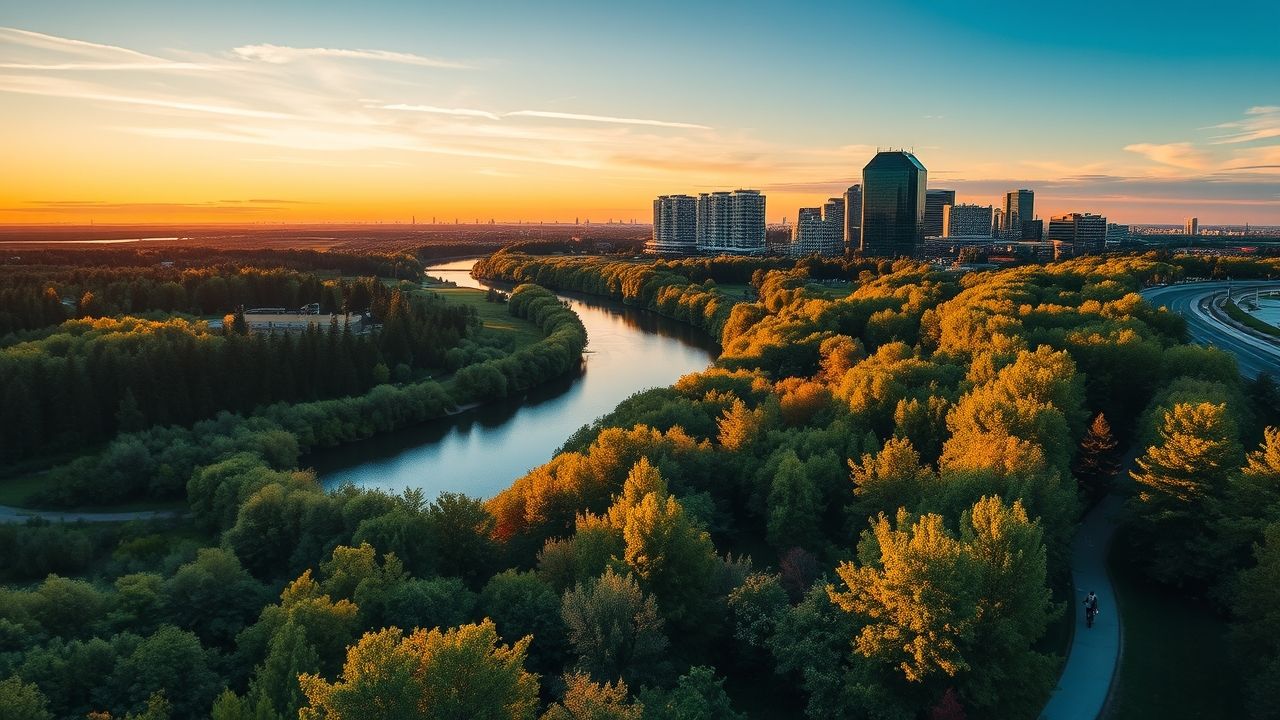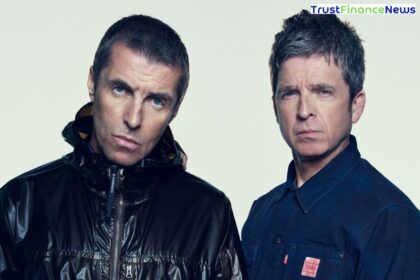Edmonton: Unveiling the Spirit of the Prairies
Beyond the common perceptions of a sprawling prairie city lies Edmonton, a dynamic urban center constantly redefining itself. Often dubbed “Canada’s Festival City” or “The Gateway to the North,” this vibrant metropolis on the North Saskatchewan River offers a unique blend of urban sophistication and rugged natural beauty. From its burgeoning tech scene to its deep-rooted cultural heritage, Edmonton presents a fascinating case study in urban development and community resilience. This article delves into the core of what makes Edmonton tick, exploring its economic drivers, cultural heartbeat, and the challenges and opportunities it faces moving forward.
Key Summary
- Economic Diversification: While historically reliant on oil and gas, Edmonton is rapidly diversifying into technology, healthcare, and logistics, fostering a resilient economy.
- Vibrant Cultural Scene: Known for its numerous festivals, world-class arts venues, and the iconic West Edmonton Mall, the city boasts a lively cultural calendar year-round.
- Community Spirit: A strong sense of community and local pride defines Edmonton, evident in its neighborhood initiatives and robust volunteerism.
- Natural Beauty & Green Spaces: Home to North America’s largest urban parkland, the River Valley, offering extensive trails and recreational opportunities.
- Future-Forward Vision: Edmonton is actively investing in sustainable infrastructure, innovation districts, and initiatives aimed at improving quality of life for residents.
Why This Story Matters
The story of Edmonton is a microcosm of Canada’s evolving identity—a tale of resourcefulness, adaptation, and a persistent drive for progress. Understanding Edmonton’s trajectory is crucial for anyone interested in urban planning, economic diversification strategies in resource-rich regions, or the cultural dynamics of modern Canadian cities. Its growth, challenges, and successes offer valuable insights into how communities can build sustainable futures while preserving their unique character. For businesses, Edmonton represents a strategic hub for innovation and logistics, while for individuals, it offers a high quality of life with abundant green spaces and cultural activities.
Reporting from the heart of the community, I’ve seen firsthand how Edmontonians adapt and innovate, whether it’s through pivoting the economy or fostering grassroots movements. This city doesn’t just react to change; it actively shapes its own destiny, making its ongoing narrative particularly compelling. The interplay of its industrial roots with its increasingly cosmopolitan aspirations makes Edmonton a particularly insightful subject for analysis, showcasing how tradition and modernity can coexist and even thrive together.
Main Developments & Context
Edmonton’s history is deeply intertwined with the fur trade, and later, the discovery of oil, which fueled much of its 20th-century growth. Today, the city is undergoing a significant transformation, moving beyond its resource-based economy. The downtown core, once quiet after business hours, has seen a revitalization with the construction of Rogers Place, home of the Edmonton Oilers, and the surrounding Ice District, a major entertainment and residential hub. This development has injected new life into the urban core, attracting residents and businesses alike.
Economic Diversification and Innovation
While oil and gas remain significant, Edmonton has made concerted efforts to diversify its economic base. The city is emerging as a leader in artificial intelligence, thanks in part to the world-renowned Alberta Machine Intelligence Institute (Amii) at the University of Alberta. Healthcare, particularly medical research and biotechnology, is another rapidly expanding sector, leveraging the city’s robust health infrastructure. Logistics and distribution also play a vital role, given Edmonton’s strategic location as a gateway to Northern Canada and a major transportation hub.
“Edmonton’s future is being built on the foundation of its past resilience, but with a keen eye on global innovation and sustainable growth. The city is not just adapting; it’s defining a new northern urban paradigm.”
Cultural Renaissance and Green Spaces
Edmonton’s cultural calendar is packed with events year-round, from the vibrant Folk Music Festival and Fringe Theatre Festival to K-Days and the Churchill Square events. The Muttart Conservatory offers stunning botanical displays, and the Art Gallery of Alberta showcases impressive collections. Beyond organized events, the North Saskatchewan River Valley provides an unparalleled urban escape. With over 150 kilometers of multi-use trails, it’s a vital green lung for the city, offering opportunities for cycling, walking, and cross-country skiing, accessible to nearly every neighborhood.
Expert Analysis / Insider Perspectives
In my years observing the city’s evolution, I’ve found that Edmonton’s true strength lies in its diverse neighborhoods and the collective spirit of its residents. Each community, from the historic Old Strathcona to the modern suburbs, contributes a unique flavor to the city’s tapestry. Local entrepreneurs are driving innovation, often with a focus on sustainable practices and community benefit. There’s a palpable sense of pragmatism and a willingness to collaborate that defines the Edmontonian approach to problem-solving.
Conversations with long-time residents often reveal a deep-seated pride in their city, coupled with an honest acknowledgement of its challenges. The winter climate, while a definitive feature, is often embraced with outdoor activities and vibrant indoor spaces. The ongoing efforts to enhance public transit and address social issues, such as homelessness and mental health, are testaments to a community that cares deeply about its inclusivity and well-being. This local perspective highlights a city that is not only growing but also maturing, increasingly aware of its role on the national and international stage.
Common Misconceptions
One common misconception about Edmonton is that it is solely a “boom and bust” oil town. While the energy sector has historically been dominant, the city has significantly diversified its economy, as noted earlier. Its investments in AI, healthcare, and education demonstrate a strategic shift towards more stable and knowledge-based industries. Another misunderstanding is that its cold winters make it an inhospitable place to live. While winters are indeed cold, Edmonton experiences abundant sunshine, and residents actively embrace the season with winter festivals, outdoor skating rinks, and a strong indoor cultural scene. The city has also invested in winter-city design principles to make urban spaces more enjoyable year-round.
Furthermore, some outsiders might overlook the extensive green spaces within the city. The sheer size and accessibility of the River Valley Park system often surprise visitors, debunking the idea of Edmonton as purely an industrial hub. It is a city that balances its urban development with an exceptional commitment to natural preservation and outdoor recreation.
Frequently Asked Questions
What is Edmonton most famous for?
Edmonton is most famous for its vibrant festival scene, earning it the nickname “Canada’s Festival City,” and for housing the West Edmonton Mall, one of the largest shopping malls in the world.
What is the economy of Edmonton like?
Edmonton’s economy is diverse, with strong sectors in oil and gas, healthcare, education, logistics, and a rapidly growing technology and artificial intelligence industry.
Is Edmonton a good place to live?
Many consider Edmonton a good place to live due to its affordable cost of living relative to other major Canadian cities, its extensive green spaces, strong community spirit, and diverse cultural opportunities.
What are the main attractions in Edmonton?
Key attractions include the West Edmonton Mall, the Muttart Conservatory, Fort Edmonton Park, the Art Gallery of Alberta, and the vast North Saskatchewan River Valley park system.
How does Edmonton handle its cold winters?
Edmonton embraces its winters with numerous outdoor activities like skating and skiing, winter festivals, and a focus on winter-city design to make public spaces enjoyable year-round, along with a robust indoor cultural scene.


